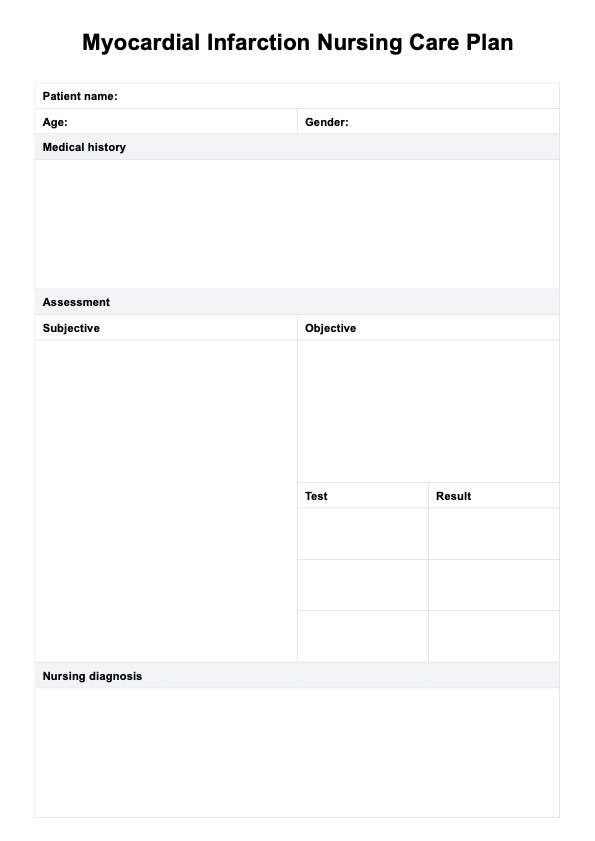The plan of care for acute myocardial infarction (AMI) involves immediate assessment and stabilization of the patient, including monitoring vital signs and administering oxygen if needed. Key interventions include administering antiplatelet agents (such as aspirin), thrombolytics, or percutaneous coronary intervention (PCI) to restore blood flow and manage pain with nitrates or morphine. Continuous cardiac monitoring and education on lifestyle modifications and medication adherence for long-term management are essential.

Myocardial Infarction Nursing Care Plan
Use our Myocardial Infarction Nursing Care Plan Template to assess and create interventions for patients who experienced a myocardial infarction.
Myocardial Infarction Nursing Care Plan Template
Commonly asked questions
The treatment plan for myocardial infarction typically includes a combination of pharmacological and non-pharmacological strategies. Initial treatment often involves medications such as antiplatelet agents, beta-blockers, ACE inhibitors, and statins. Following stabilization, patients are usually referred for cardiac rehabilitation to promote recovery and prevent future events through exercise training and education on heart-healthy living.
Caring for a patient with myocardial infarction involves immediate and ongoing assessment, monitoring, and intervention. Initially, ensure the patient is in a comfortable position and administer oxygen if needed. Monitor vital signs closely and perform continuous cardiac monitoring to detect any arrhythmias. Administer prescribed medications and provide pain management. Additionally, educate the patient about lifestyle modifications. Emotional support is also essential, as anxiety is common in patients experiencing a heart attack.
EHR and practice management software
Get started for free
*No credit card required
Free
$0/usd
Unlimited clients
Telehealth
1GB of storage
Client portal text
Automated billing and online payments











